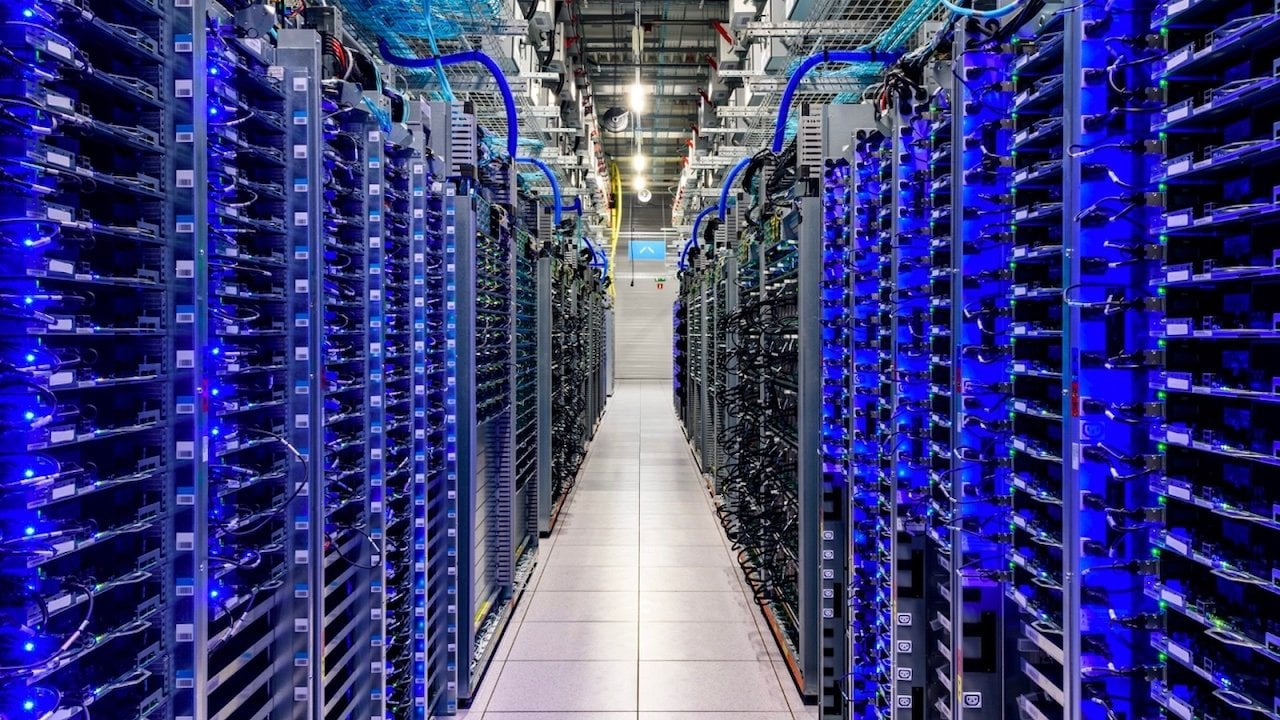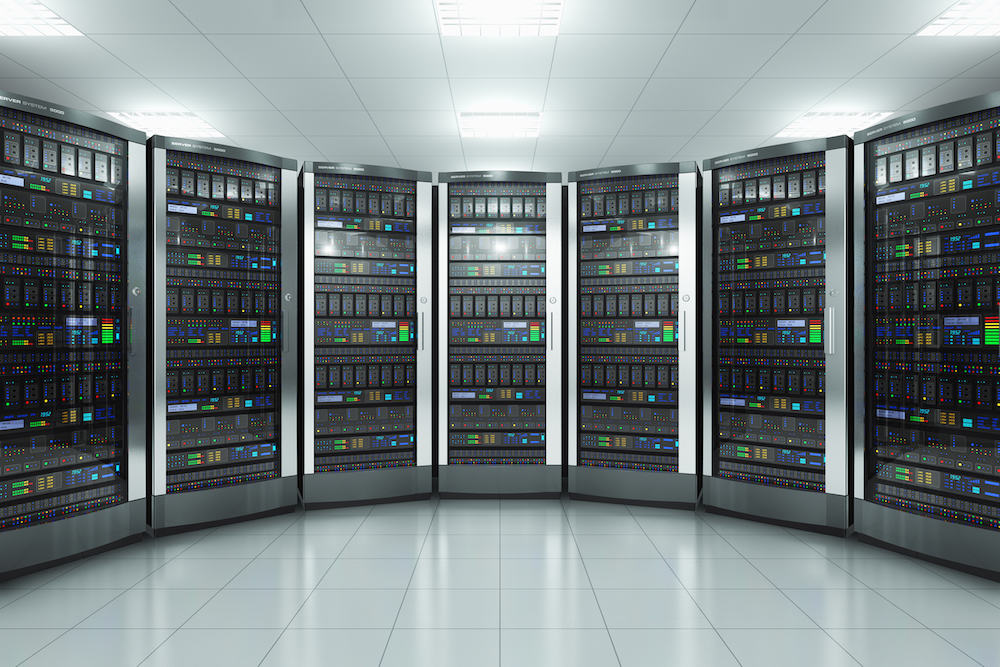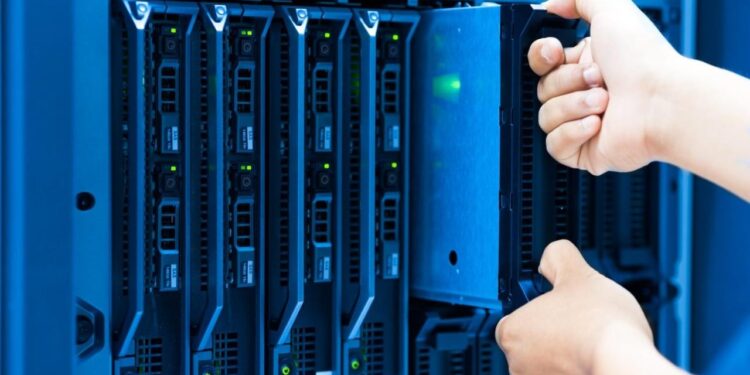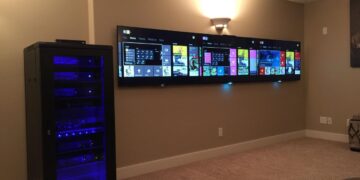In the digital era, data is the most valuable asset any business or individual possesses. The sheer volume of information generated every second—from high-resolution photos and 4K videos to complex financial records and mission-critical databases—demands a robust and intelligent storage solution. Relying on an external hard drive or scattered local files is no longer a viable option. At the heart of any modern data strategy lies the data storage server, a specialized piece of hardware and software meticulously designed to house, manage, and protect information with unwavering reliability and performance.
This comprehensive guide will demystify the world of data storage servers. We will go beyond a simple definition, exploring the fundamental concepts that govern storage, the distinct types of storage servers available, and the critical hardware and software components that make them work. Our goal is to provide a clear and detailed roadmap for understanding, choosing, and implementing a data storage solution that is perfectly aligned with your specific needs for capacity, speed, and data integrity. Whether you are a small business owner, an IT professional, or a tech enthusiast building a home lab, this guide will serve as your definitive resource.
Foundational Concepts of Data Storage Servers

Before we explore the different types of storage servers, it is essential to understand the key metrics and concepts that define their performance and utility.
A. Capacity: This is the most straightforward metric—the total amount of data a server can store, typically measured in terabytes (TB) or petabytes (PB). It’s crucial to plan for future growth and not just your immediate needs. A good rule of thumb is to calculate your current needs and double or triple that number to account for future data generation.
B. Performance: Performance is measured in several ways:
- Throughput: The amount of data a server can read or write per second (e.g., gigabytes per second). This is important for tasks like video editing or large file transfers.
- IOPS (Input/Output Operations Per Second): The number of individual read or write operations a server can perform in a second. This is a critical metric for transactional databases and virtualized environments where there are a large number of small I/O operations.
- Latency: The time delay between a request for data and the server’s response. Low latency is essential for a snappy user experience and real-time applications.
C. Scalability: The ability of a storage server to grow in capacity and performance as your needs increase. A scalable solution allows you to add more drives or even entire storage arrays without a complete system overhaul.
D. Redundancy: The server’s ability to protect data from hardware failure. A redundant system ensures that if a component fails, your data remains safe and accessible, preventing downtime and data loss.
The Three Primary Types of Storage Servers
Data storage servers can be categorized into three main architectures, each designed for a different purpose and with its own set of advantages and disadvantages.
A. Network Attached Storage (NAS)
A NAS is a file-level data storage server connected to a computer network that provides data access to a heterogeneous group of clients. Think of it as a private cloud on your local network. It is typically a dedicated box with one or more hard drives, a simplified operating system, and a network connection.
- How It Works: A NAS uses standard file-sharing protocols like SMB/CIFS (for Windows and macOS) and NFS (for Linux) to allow users to access files over the network. It presents the storage to clients as a simple shared folder, making it incredibly easy to use.
- Ideal Use Cases:
- Centralized file sharing for small businesses and home users.
- Automated data backups from multiple computers.
- Media streaming for photos, music, and videos.
- Advantages:A. Ease of Use: NAS devices are designed to be plug-and-play. Their user-friendly web interfaces make setup and management a breeze, even for non-technical users.
B. Affordability: They are significantly cheaper than a SAN and are highly cost-effective for their level of functionality.
C. Versatility: Modern NAS devices from brands like Synology and QNAP are more than just file servers. They offer a rich ecosystem of apps for everything from running a surveillance system and a website to a virtual machine.
- Disadvantages:A. Lower Performance: A NAS is not optimized for high-performance workloads like running a large database or a multi-user virtualized environment. The network protocols and hardware are not designed for that level of I/O.
B. Limited Scalability: While you can add more drives, a single NAS box has a finite number of drive bays and is not designed to scale out to enterprise-level capacity.
B. Storage Area Network (SAN)
A SAN is a high-speed network of storage devices that provides block-level storage to a group of servers. Unlike a NAS, which provides file-level access, a SAN presents the storage to servers as if it were a locally attached disk.
- How It Works: A SAN uses specialized hardware and protocols like Fibre Channel (FC) or iSCSI to create a dedicated network for storage traffic. When a server needs data, it sends a block-level request to the SAN. The SAN handles the request, finds the data, and sends the block back, making the process incredibly fast.
- Ideal Use Cases:
- Virtualization and cloud infrastructure.
- Large, transactional databases (e.g., SQL Server, Oracle).
- High-performance computing (HPC) and video editing.
- Advantages:A. Extreme Performance: A SAN is optimized for high-speed I/O. It provides the low latency and high throughput needed for the most demanding workloads.
B. High Scalability: SANs are built to scale. You can easily add more storage arrays to the SAN, and the system can manage terabytes or even petabytes of data.
C. Centralized Management: All storage is managed from a single point, simplifying administration in a large environment.
- Disadvantages:A. Complexity: A SAN is a highly complex system that requires specialized knowledge to design, implement, and maintain.
B. High Cost: SANs are expensive, often costing tens or hundreds of thousands of dollars, making them a solution for large enterprises and not small businesses.
C. Direct Attached Storage (DAS)
DAS is the simplest form of data storage, where storage devices are directly connected to a single server. Think of it as a hard drive inside a server or an external drive connected via USB or Thunderbolt.
- How It Works: The storage is connected directly to the server’s motherboard via an internal bus (e.g., SATA, SAS) or an external cable. It is not on a network and cannot be shared with other servers.
- Ideal Use Cases:
- A single server’s local storage.
- Small-scale applications that do not require data sharing.
- Advantages:A. Simplicity: DAS is easy to set up and manage, as there is no complex network to configure.
B. High Performance: Because the storage is directly connected to the server, it offers excellent performance and very low latency.
C. Cost-Effective: It is the most affordable way to add storage to a single server.
- Disadvantages:A. No Sharing: The storage cannot be accessed by other servers or clients on the network.
B. Limited Scalability: A server can only support a finite number of DAS devices. To scale, you have to add more servers.
C. No Redundancy: DAS provides no inherent redundancy. If the drive fails, your data is lost unless you have a separate backup.
The Underlying Hardware

Regardless of the server type, the hardware that stores and manages your data is crucial.
A. Hard Drives vs. Solid-State Drives
The choice between an HDD (Hard Disk Drive) and an SSD (Solid-State Drive) is a fundamental one.
- HDDs are traditional mechanical drives with spinning platters. They are a cost-effective solution for bulk storage and large-scale archives. Their main drawback is their slow performance and mechanical nature, which makes them prone to failure.
- SSDs use flash memory and have no moving parts. They are exponentially faster than HDDs, have lower latency, and are more reliable. Their main drawback is their higher cost per gigabyte and a finite number of write cycles.
- NVMe Drives are the latest evolution of SSDs. They connect directly to the motherboard via a PCIe slot, offering speeds that are several times faster than traditional SATA SSDs. They are the ideal choice for operating systems, databases, and high-performance applications.
B. The RAID Controller
A RAID (Redundant Array of Independent Disks) controller is a piece of hardware or software that combines multiple physical drives into a single logical unit. Its primary purpose is to protect data from a drive failure.
- RAID 0 (Striping): Spreads data across multiple drives for maximum performance, but offers no redundancy. If a single drive fails, all data is lost.
- RAID 1 (Mirroring): Creates an exact copy of your data on two drives. If one fails, the other takes over, and your data is safe.
- RAID 5 (Parity): Spreads data across at least three drives with one drive reserved for “parity” data. This setup can withstand a single drive failure and offers a good balance of performance, capacity, and redundancy.
- RAID 6 (Dual Parity): Similar to RAID 5, but with two parity drives. This allows it to withstand two simultaneous drive failures, making it a more secure option for mission-critical data.
- RAID 10 (Striping + Mirroring): Combines the best of both worlds, offering both high performance and excellent redundancy. It requires at least four drives.
A critical point to remember: RAID is not a backup! It protects you from hardware failure, but it cannot save you from accidental deletion, a software bug, a virus, or a physical disaster like a fire.
The Strategic Layer
The software that runs on your server and the management policies you implement are just as important as the hardware.
A. Advanced File Systems
The file system organizes data on the storage drives. Advanced file systems like ZFS and Btrfs are specifically designed for data storage servers.
- Data Integrity: Both ZFS and Btrfs use checksums to verify that your data has not been corrupted over time. This process, known as “data scrubbing,” is a powerful defense against silent data corruption, a common problem in large storage systems.
- Snapshots: These file systems can take instant, space-efficient snapshots of your data, allowing you to roll back to a previous state in case of a problem.
- Copy-on-Write: This feature ensures that data is never overwritten in place, which further protects against corruption.
B. Data Backup and Disaster Recovery
A comprehensive backup strategy is your ultimate insurance policy. The industry standard is the 3-2-1 backup rule:
- 3 copies of your data.
- Stored on 2 different types of media (e.g., hard drives and cloud storage).
- With at least 1 copy stored offsite.
This simple rule ensures that even a catastrophic disaster cannot wipe out all your data.
The Future of Data Storage
In 2025, data storage is not just about a physical server; it’s also about a blend of on-premise and cloud solutions.
A. Cloud Storage
Cloud storage services like Amazon S3 (Simple Storage Service) and Microsoft Azure Blob Storage provide massively scalable and highly available storage in the cloud.
- Object Storage: This model stores data as objects in a flat structure, which is ideal for unstructured data like images, videos, and backups.
- Advantages: Unmatched scalability, no hardware management, global accessibility.
- Disadvantages: Higher long-term cost, potential latency, and less control over your data.
B. Hybrid Storage
The most popular strategy today is a hybrid model, where a business uses an on-premise NAS or SAN for its most critical, frequently accessed data and a cloud service for backups, archiving, and collaboration with remote teams. This provides the best of both worlds: the performance and control of a local server with the flexibility and redundancy of the cloud.
Conclusion
Choosing the right data storage server is a strategic decision that forms the very foundation of your digital infrastructure. It is a choice that will dictate your performance, security, and long-term scalability. The era of seeing a storage server as a simple box of hard drives is over. Today’s storage solutions are complex, intelligent systems that demand a clear understanding of their purpose and a well-defined strategy for their implementation.
For a small business or an individual, a NAS remains an unbeatable choice, offering a perfect blend of affordability, ease of use, and a rich set of features that extend far beyond simple file sharing. For a large enterprise with mission-critical databases and virtualized environments, a high-performance, highly redundant SAN is the only solution that can meet the demand for speed and scale. And for everyone in between, a hybrid approach, combining the power of an on-premise solution with the flexibility of the cloud, provides a future-proof strategy that can grow with your business.
Ultimately, the most important investment you can make is not in the hardware itself, but in a robust RAID configuration and a comprehensive backup plan. A server, no matter how powerful or expensive, is only as good as its ability to protect your data. By understanding the core principles outlined in this guide and by choosing a solution that prioritizes data integrity, you are building a digital fortress that will safeguard your most valuable asset and provide a stable, reliable foundation for years to come.












